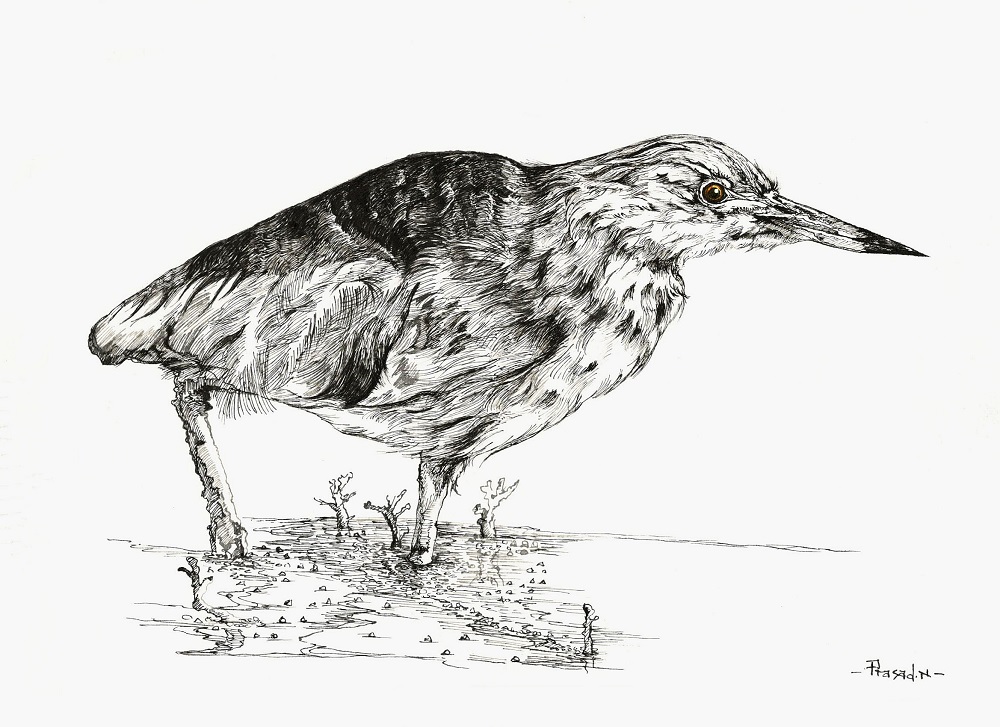

- Title: Crouching Heron!
- Medium: Ink on paper
- Duration: 12 hours
- August-11-2015
After an awesome weekend at Agumbe Seethanadi Nature Camp, watching gliding frogs, listing to Wynand frogs calling out for their mates, little crawling leeches, Golden Oriole's calls early morning and constant rain drops is no less than a paradise on earth. Not to forget the Grey Hornbills calls at a far distance is such a pleasure to my soul. Such experiences energizes me, among such beauties I wrote about this humble yet great hunter of the pond!
Last week, we spoke about a wader and disappearing lakes. Continuing with the same theme we speak about Indian Pond Heron (Ardeola Grayii).
Indian Pond Heron have whitish wings contrast with dark scapulars, light yellow tarsus, streaks appear on head,neck and breast usually. During breeding season they display yellowish tinge over the head and neck. Maroonish brown scapulars. Male/Female look similar during non breeding season, while during breeding season the male displays lengthy white steak from their crown.
As usual I left home by 4:30 am to catch the early morning light a Hoskote lake, armed with a binocular, field book,waterproof gel-pen, camera with a sturdy tripod. Positioned myself at the entrance of the lake, eagerly waiting for the birds to wake up and do what they do.
At the first ray of sunlight slowly a pond heron made her way. After moving around for few minutes in the green algae, she stood still and then this crouching position was the last stance just before she struck and a tiny cat fish was struggling for its life. She swallowed the fish slowly and flew towards her hungrily calling chicks.
Her crouching pose is what I wish to show through this artwork, at one moment she is a great hunter and the next moment she's tenderly seen feeding her chicks. This contrast in emotion and behavior is what makes every such encounter fascinating. Don't you think so?
Since pond heron main diet is fish, constant overfishing, littering, industrial waste been disposed to water, increase in PH levels and decreasing oxygen in water present great treat. Loss of habitat with every other lake being encroached is another reason for their decreasing numbers. Since they build their nests on trees, every tree that's been cut down on the banks of a water-body is a nail we are hitting on their coffin!
Hope you enjoyed this motherly encounter with me? Until next week, keep watching!